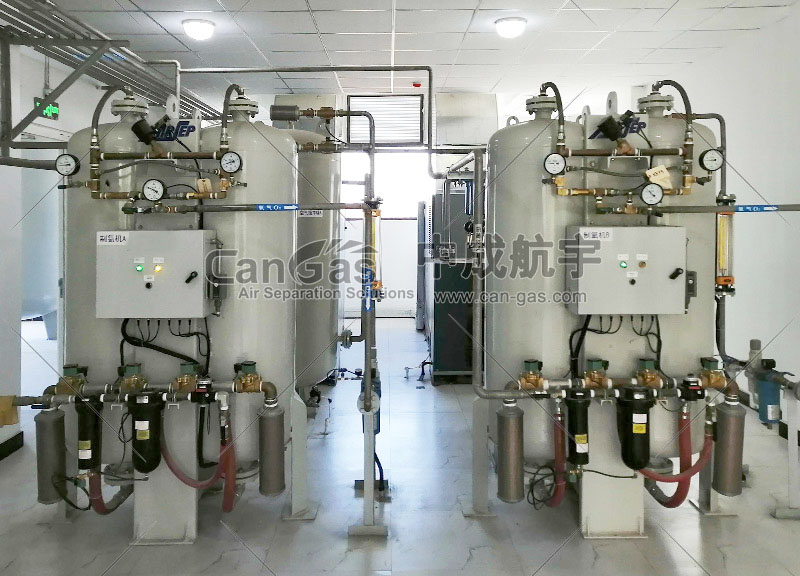Relevant technical requirements for the oxygen supply pipeline network of the medical center system
ReturnThe pipeline of the medical center oxygen supply system is a part of the gas transmission between the hospital oxygen source and the hospital ward. In terms of design and installation, it should be safe, leak-free, durable, and free of secondary pollution during the transmission process. In general, a set of qualified oxygen supply pipelines can support a powerful oxygen supply and utilization system to ensure the safety and efficiency of medical oxygen use.
The pipeline of the central oxygen supply system consists of pipes, pipe fittings, oxygen shut-off valves, oxygen maintenance valves, end valves, valve boxes, alarm boxes, and regional flow meters. The piping system has relevant technical requirements from material to layout to connection, specifically;
1. The oxygen supply pipeline of the medical center system should be made of high-quality stainless steel tubes and high-quality degreasing copper tubes. The oxygen, negative pressure, air outdoor pre-buried and tube wells are all made of high-quality stainless steel tubes, and the pre-embedded tubes in the ward are made of high-quality degreasing copper tubes. The whole set of pipelines needs to undergo strict degreasing and air tightness tests.
2. Pipeline layout: During the installation and planning of oxygen pipelines, it is necessary to avoid high temperature and flame areas. If necessary, heat insulation measures should be added to the pipeline sections to ensure that the temperature of the pipe wall does not exceed 70°C, and open flames and oil pollution are strictly prohibited from approaching oxygen pipelines and valves. Lead the main pipeline of the oxygen station to the pipeline well of the building, and then connect it to the wards on each floor. The horizontal pipes of the ward are erected in the ceiling of the corridor of the ward. Device in-band.
4. Pipeline connection: Oxygen pipelines should have less elbows and bifurcations. The connection of oxygen pipelines should be welded, but the connections with equipment and valves can be connected with flanges or threads. Teflon tape should be used as filler for threaded joints, and it is strictly forbidden to use hemp or cotton silk coated with lead red, or other grease-containing materials. Oxygen pipelines are degreased before installation, and can only be used after passing the inspection. The copper pipe connections between the pipes are all made of silver-based brazing and welding with nitrogen protection. The pipes are provided with casings through the walls, and there are no welds and joints in the pipe sections inside the casings. Oxygen pipeline markings and gas flow direction markings are provided on pipes in vertical shafts, floor horizontal pipes, and equipment with inspection valves.
5. Pipeline grounding: the oxygen pipeline is reliably grounded, and the grounding resistance is less than 10 ohms.
6. Output pressure: Oxygen terminal pressure: 0.2-0.4MPa (adjustable); the oxygen supply pressure error is not greater than 0.02 Mpa under the maximum and minimum flow rate.
7. System leakage rate: Guaranteed 24-hour system leakage rate ≤ 0.2%.
8. Alarm box: each floor should be equipped with an oxygen shut-off valve and an area alarm box.
9. Valves Install an oxygen stop valve before the oxygen supply main pipe on each floor enters the monitoring and alarm box, and install an oxygen maintenance valve at the air inlet end of each ward equipment belt; reserve the end valves of various pipelines in the ward to facilitate communication with other wards Use butt.


